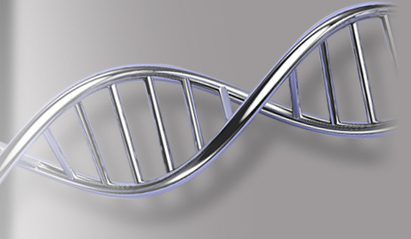Genetics
You are here
With the advent of DNA sequencing, the study of genetics took a major leap forward as this enabling technology entered every day usage. Studying the mechanisms of inheritance of normal and mutated genes became possible at the single base level. You may be studying single gene or complex traits in humans or population studies in plants or animals. Whatever you are studying, the bottleneck since the invention of DNA sequencing has remained the same, it is not in generating the data but in analysing it. It is imperative to obtain the best possible sequence so that one can be sure of one’s findings. And if analysis is the bottleneck, then learning to perform the analysis needs to be made as easy as possible. Ease of use is something that Sequencher is built around.
To provide the best possible sequence, Sequencher gives you complete control over how you trim your data, and if you don't like how you trimmed it, then you can batch restore bases with clinical precision. Once you are ready to assemble your sequences, then having a number of algorithms from which to choose is essential as is the choice of consensus calculation. You have confidence scores – great, use Consensus by Confidence. Your data lacks confidence scores – no problem, use one of two methods (Consensus Inclusively or Consensus by Plurality) depending on your needs. A key problem is that you may be studying several samples at a time. That's not a problem. With Assemble by Name, Sequencher can sort out which reads should be aligned by using information from the sequence naming scheme.
The Reference Sequence is a powerful tool you can use for constructing alignments where the base number and directionality is set by the Reference Sequence, which can also provide annotation information if it has a GenBank Feature Table. If you have missing information in your construct, you can use the Reference Sequence to fill in the blanks. If you are only interested in the region spanned by the Reference Sequence, you can Trim to Reference Sequence. For some studies, looking at heterozygotes is an important step which is why you can Call Secondary Peaks, turning single base calls into the appropriate ambiguity codes. Studying these in the context of the contig can be hard work which is why we introduced the Variance Table which enables you to focus on just the differences and explore them within the context of the chromatograms because the table is linked to the underlying data. You can even view the impact on protein translation by viewing the Translated Variance Table. Both tables allow you not only to export data but also to generate reports in PDF format which is great when you want to share your data with your colleagues.
Sequencher Connections is a new way of running BLAST, Primer-BLAST and Local-BLAST. Instead of submitting your sequences one at a time via your web browser, you can submit sequences in a batch and monitor their status so you will know when your results are ready for viewing. BLAST results expire from the NCBI server after 30 to 36 hours. In Connections, your results are saved with your project. You can add new searches to existing ones and compare results over time, for example, using the consolidated Schematic view.
Whether you are already working with NGS data or about to make that leap, Sequencher can make life so much easier. It has standardized interfaces for all its NGS algorithms. This means that, if you learn to run one algorithm, then you have learned to run them all. No command lines or abstruse single letter options, just point and click! You can choose from Reference-Guided algorithms or de novo assembly. Whether you are using MultiplexID to cut costs or because you are studying more than one organism, Sequencher is there for you. Studying variation has become easier with the addition of variant calling which produces a VCF file for use with your favorite genome browser. When you are ready to move on to transcriptomics, Sequencher is your tool of choice for assembly or alignment and gene expression analysis using the Cufflinks suite. While Sequencher can give you a first look at your data through its built-in plots and charts, for more detailed analysis you need CodeLinker. This application can take you through from data cleanup, clustering, Principal Component Analysis, to data mining using SLAM and data prediction with IBIS. Best of all, you can use CodeLinker for RNA-Seq expression data and microarray data.


